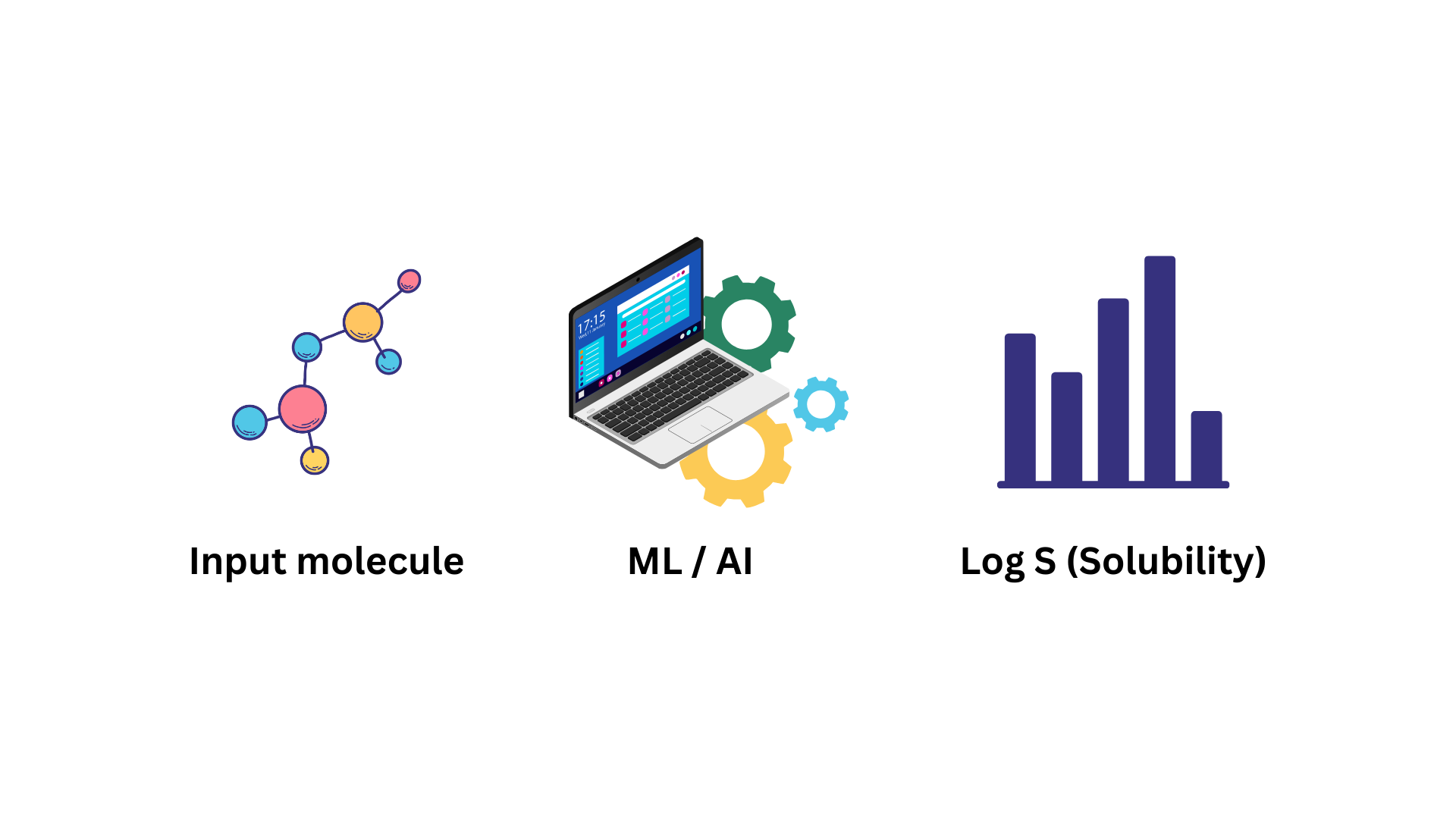
Computational Chemistry
Predicting molecular properties: Solubility
In the realms of pharmaceuticals and agrochemicals, solubility is a cornerstone of efficacy and safety. It is defined as the amount of a substance that will dissolve in a given volume of solvent. relating to both the solute and the solvent, as well as the temperature and pressure. Solubility is commonly expressed in terms of intrinsic solubility, where the solubility of a buffered solution is taken at a given temperature and pressure. The intrinsic solubility of a substrate reflects its inherent ability to dissolve in a specific solvent, acting as a straightforward representation of a molecule's likelihood to dissolve. The intrinsic solubility of a compound at a given pH level is denoted by logS pH and can be derived from the Henderson-Hasselbalch equation
$$ \log S_{pH} = \log S_{0} + \log \left( 1 + \alpha \right) $$ $$ \text{where} \ \alpha = \frac{\sum \alpha_{cA_i}}{\sum \alpha_{nA_j}} $$
In this form, \(\alpha_{cA_i}\) is the distribution percentage of the i-th charged microspecies while \(\alpha_{nA_j}\) is the distribution percentage of the j-th neutral microspecies at a given pH. This equation can be used to determine the pH-dependent solubility curves and the intrinsic solubility making it vital for understanding the behavior of a given compound.
Why Solubility Matters
Solubility is extremely important, for example in the pharmaceutical industry, the aqueous solubility of a potential drug has a high impact on the progression of a target molecule. High aqueous solubility is essential to produce drug compounds with the potential to enter the bloodstream circulation so that it can have an active effect where needed. The aqueous solubility can be a limiting factor in the progression of a compound, not only due to its impact on the bioavailability, but also due to problems with the toxicity of poorly soluble molecules, with consequences such as crystallization in the body. In fact, a lack of efficacy is the major problem encountered with the formulation and development of new drug compounds, together with pharmacokinetics it accounts for over 50 % of failed development projects. Similarly, solubility is a vital consideration in the development of agrochemicals, impacting their environmental and toxicological properties. The accurate prediction of solubility allows for more rapid development of more robust and effective target compounds. Moreover, it decreases the probability ofan ineffective target making it past the screening stage, thereby allowing for the allocation of more resources to more promising candidates.
Benefits of ML in Solubility Prediction:
The demand for new drug-like compounds is ever-growing, motivated by the exponentially increasing population size as well as the constant emergence of new diseases and viruses. As such, the empirical techniques used to predict solubility become less and less suitable for the mammoth task of rapidly screening lead compounds due to the sheer number that could be considered. New techniques are required for the prediction of solubility, that are robust and accurate to help minimize the cost of drug development as well as reduce the wastage of resources. The advent of machine learning, coupled with developments in computational chemistry provide a natural progression to the in-silico simulation of molecular properties such as solubility. By utilizing models such as Graph Convolutional Networks (GCNs) and Random Forests, researchers can predict solubility based on molecular structure and other relevant features, providing valuable insights early in the development pipeline.
Other Blog posts
Konstantin N
BLOG
Solubility Computational Chemistry QSAR Machine Learning Graph Convolutional Networks Python